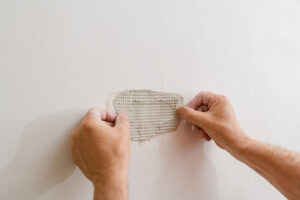Regularly check your Stucco Philadelphia walls for cracks and damage. Repairing them promptly can prevent water intrusion and save you money in the long run. Also, ensure proper drainage to minimize water damage.

Lime plasters and washes keep buildings cool in summer, warm in winter, and are breathable. They are also hygienic, and have been used to combat cholera epidemics. Additionally, they provide a rich backdrop for a range of paints and can add visual intrigue to almost any space.
A lime based plaster can be made with a mix of different materials, including sand and aggregates. The choice of the aggregate has a significant effect on the final plaster and can help to control its consistency and finish. For example, a coarse grade of sand will produce a more course plaster and is best suited for base coats, while a fine grained sand will result in a more refined plaster suitable for top coats.
While the use of lime based materials is ancient, modern lime plasters are often modified to meet new requirements. These modifications can include the addition of fibres, fillers, and other chemicals to improve strength and durability. These new formulations also allow for the use of more pigments and are easier to clean. This is important because the adsorption of chemicals into the surface of the plaster can affect its longevity.
The earliest plasters known to man were lime based, and are believed to have been used in Jordan and Catalhoyuk around 7500 BC. These plasters were usually mixed with mud or clay, and could even contain sawdust. Later, these were replaced with a mixture of finely ground limestone and pozzolan.
The earliest lime based plasters were used to decorate surfaces such as walls and ceilings. They were tinted with mineral and vegetal pigments to achieve a range of colours. These colours were not only bright and vibrant but also long-lasting. For example, azurite and lapis lazuli – precious blue pigments – were often combined with lime for frescos, and this allowed the colour to last well over time.
Stucco is a durable material
Stucco is a long-lasting building material, especially when installed correctly. The materials used in stucco (cement, crushed marble and sand) are heavy-duty and therefore can resist weathering and impact damage better than vinyl or brick. In addition, stucco can be finished in a wide range of textures and colors. The result is a beautiful and durable exterior that will not require any additional maintenance, saving you money over time.
Another advantage of stucco is its insulating qualities. The cement, sand and marble create an air-sealed layer that is far more effective than vinyl or brick. This results in your heating and cooling systems working more efficiently, reducing energy costs. It also helps to prevent moisture problems, which can damage the structure of your home.
In addition, stucco is fungus-resistant. While this is not the only reason to choose this material for your home, it is a good one. Fungus is a common problem for many types of buildings and can be caused by the presence of organic matter, such as dirt or plant life.
The process of creating stucco is not without its challenges, however. It requires specialized application tools, a knowledge of the material and proper installation techniques. For this reason, it is best to hire a professional for the job. A contractor will not only be able to ensure the quality of work, but they will also provide a warranty and guarantee that the job will be done right.
Although stucco is a durable and attractive material, it is not impervious to water damage. A faulty drainage system can lead to water intrusion and moisture problems, which can cause cracks and discoloration. Consequently, you should regularly inspect your stucco to spot any damage and repair it promptly.
One way to avoid moisture problems is by using an EIFS cladding, which is a barrier that can be applied over the existing stucco. This consists of a layer of insulation board that is fastened to the base of your stucco with adhesive or screws. The barrier produces a moisture-resistant surface, and is connected to the underlying stucco with drainage channels.
It is easy to install
The process of applying stucco to a wall is very easy and requires only basic tools. However, it’s important to understand what the process entails before you start. This will help you avoid problems that can lead to costly mistakes and repairs down the line.
The first step is to prepare the wall. This includes removing existing siding, repairing cracks, and addressing any other damage on the surface of the wall. It’s also important to ensure that any electrical penetrations are properly sealed, including light fixtures, weatherproof receptacles, and cable TV boxes. You should also consider installing a moisture barrier to prevent water infiltration, which is vital in climates with high rainfall and humidity.
You’ll need to apply a bonding agent or stucco wrap before applying the scratch coat. This will enhance adhesion and reduce the likelihood of future cracking. In addition, you’ll want to use a joint reinforcement tape in high-stress areas like expansion joints. It’s best to consult the manufacturer’s guidelines for detailed instructions and specific products.
Once the preparation is complete, it’s time to mix the stucco. The mixture should be a creamy, workable consistency that can be easily molded with your trowel. You can add additives to the mixture to improve flexibility, workability, and adhesion. However, it’s crucial to follow the manufacturer’s guidelines for mixing ratios.
Once the scratch coat has dried, it’s time to apply a brown coat. This coat will provide a color base, and you can smooth it out with a metal trowel or green sponge float. Lastly, you can add an acrylic finish coat to protect your stucco and give it a decorative touch. Adding a final layer will also increase the longevity of your stucco wall.
It is environmentally friendly
Stucco is a sustainable material that can be used to create a more environmentally friendly home. It has many advantages over other exterior finishes, including durability, low maintenance requirements, and energy efficiency. It also has a low environmental impact due to its non-toxic nature and reduced waste. It is also fire-resistant, which can help to prevent the spread of wildfires and save homeowners on insurance costs.
With heightened ecological awareness and the growing push towards sustainable construction, architects are reevaluating traditional building materials to determine how they can be made more eco-friendly. Stucco is one such building material that has received renewed attention due to its ability to meet sustainability goals for new commercial buildings. New developments in materials and application techniques have enabled stucco to be produced with fewer lifecycle carbon emissions, making it a viable green option for building facades.
In order to minimize embodied carbon emissions, stucco production requires minimal reprocessing and can be made from locally sourced ingredients. The use of alternative supplementary cementitious materials and the incorporation of recycled aggregates reduces reliance on Portland cement, which has high embodied carbon content. In addition, the application of acrylic polymers improves workability and bonding to increase flexibility. Vapor-open polymers promote breathability and help avoid moisture problems, while reflective pigments can limit solar gain to reduce HVAC costs.
Another advantage of stucco is its insulation properties. When properly installed, it acts as a barrier against temperature fluctuations, helping to keep homes warmer in the winter and cooler in the summer. This can cut down on reliance on fossil fuel-powered heating and cooling systems, thereby curbing energy consumption and greenhouse gas emissions.
Unlike other siding materials, stucco is highly durable and can resist the damage caused by weathering, pests, and fire. Its longevity translates into reduced maintenance requirements, which can significantly lower the amount of materials required over time. Stucco is also a good choice for coastal regions because it is resistant to salt spray.
Another benefit of stucco is that it can be re-raised or “restuccoed” as needed, eliminating the need for costly replacements and reducing waste. Furthermore, it is highly recyclable, which contributes to a circular economy and helps protect the environment. It is also easy to maintain, requiring only periodic cleaning and resurfacing with little or no harsh chemicals.
